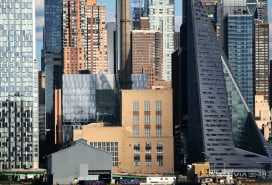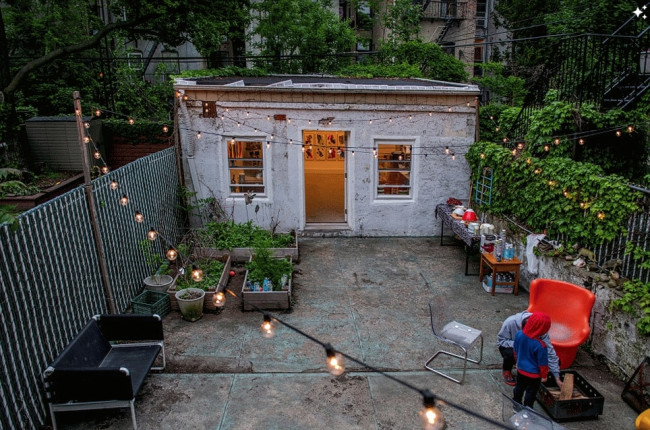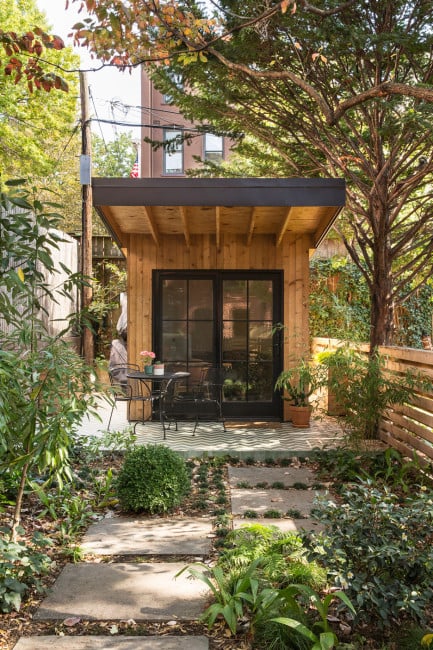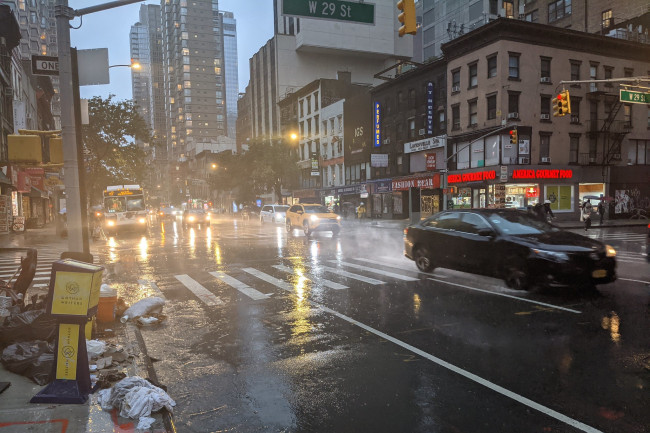Have space in NYC to create an ADU? You may be eligible for funds to make it happen
- A new pilot program provides financial and technical support to add a small housing unit
- 15 owners will be selected to add an ADU in their basement, attic, garage, or backyard
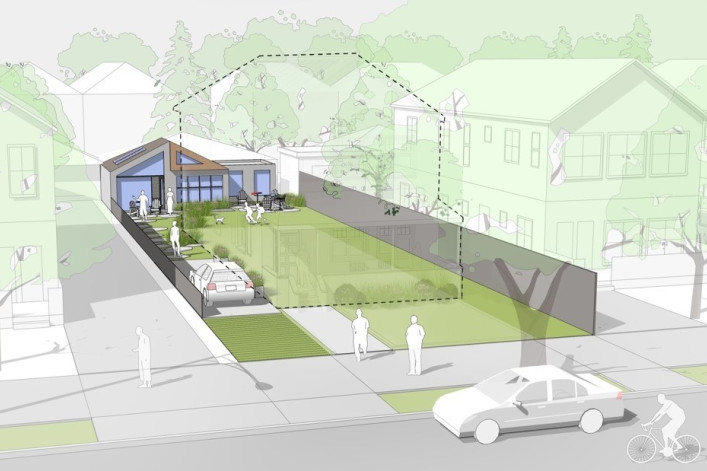
A schematic of a backyard version of an ADU. Other spaces that may be suitable for an accessory dwelling unit includes basement apartments, attic conversions, garage studios, and attached-in-law suites.
Plus One Accessory Dwelling Unit Program
New York City is wading into the sometimes-controversial accessory dwelling unit debate in an effort to build a little (emphasis on little) more housing in every neighborhood.
The city’s Department of Housing Preservation and Development (HPD) Commissioner Adolfo Carrion Jr. today announced the launch of the Plus One ADU pilot program, which will provide up to $395,000 from HPD and $2.6 million in grants from New York State Homes and Community Renewal to help 15 single-family owners build ADUs on their properties.
The pilot program is part of Mayor Eric Adams “City of Yes” proposal to create 100,000 housing units for 250,000-plus New Yorkers, which is currently going through environmental review.
The Plus One ADU program provides a “lifeline” to New Yorkers, Carrion Jr. says, especially to “the multi-generational family hoping to keep their loved ones close, to the older New Yorker looking to stay in a neighborhood they love.”
Who is eligible for the ADU pilot program?
An ADU is a small, independent residential unit located on the same lot as a house. The unit can be within the house or a detached structure, and a variety of housing types may be suitable for the program: basement apartments, attic conversions, backyard cottages, garage studios, or attached-in-law suites.
Applicants’ housing must comply with existing zoning and building codes. Properties must be free of housing and building code violations as well. Owners must occupy the main house and be current on any existing mortgages and municipal bills.
The program is aimed at working- and middle-class families. Owners who earn up to 165 percent of the area median income or $186,450 for a two-person household may be eligible. Preference will be given to owners who are at or below 100 percent AMI or $113,000 for a two-person household.
Special consideration for basement ADUs
For basement conversions, the ADU space must meet ceiling height requirements before conversion and must be located outside of the 2050 Stormwater Flood area as well as the 2100’s 100-year coastal flood zone.
Flooding is a serious concern for New Yorkers who live in basement apartments that are not brought up to code. At least 11 people died in NYC basement apartments after they were inundated with rushing water or suffered from a building collapse during Hurricane Ida in 2021.
The tragedies underscored the challenges of converting basements to legal apartments. A small pilot program under Mayor Bill de Blasio to convert basements and cellars of one- and two-family homes only attracted eight homeowners and ultimately faced budget cuts.
Hot button topic for the suburbs
Clearing the way for ADUs in the suburbs was part of Governor Kathy Hochul’s ambitious housing vision to build 800,000 units statewide, but it inflamed Long Island owners who feared their neighborhoods would be overrun and their quality of life threatened by an influx of renters. Faced with opposition by NIMBY-sensitive legislators, Hochul dropped her plan.
Across the U.S, however, interest in ADUs is keen, especially among owners desperate to get out from under the weight of a mortgage and make extra income and renters who can’t afford to buy and are stymied by the lack of affordable rentals. But zoning laws remain an obstacle, as well as concerns about short-term rental use.
But there are ways around those hurdles. For example, ADUs are legal in parts of Florida and some places have use restrictions, meaning only immediate family members or employees can live there.
The ADU debate is not new for the New York area: As the Regional Plan Association, a non-profit research association, points out in a post on its website, a 1988 New York Times article reported on a similar faceoff: when the Long Island Board of Realtors called for legalizing ADUs, some Long Island towns opposed legalization.
Mary Ann Figoski of Babylon, the president of the realtors' group, pointed out in the NYT article that ADUs already existed, and tenants who live in them were necessary workers. “If they don't have these apartments available to them, they have no place else to live,” she says.
How to apply to the Plus One ADU program
Owners will have until February 13th, 2024 to complete the survey to be considered for participation in the pilot program. Eligible owners will be required to pass a housing inspection by the program administrator, Restored Homes HDFC, which provides financial and technical support, including predevelopment and construction resources. Participants must also qualify for financing and loan terms based on household income and pay a $200 non-refundable application fee.









